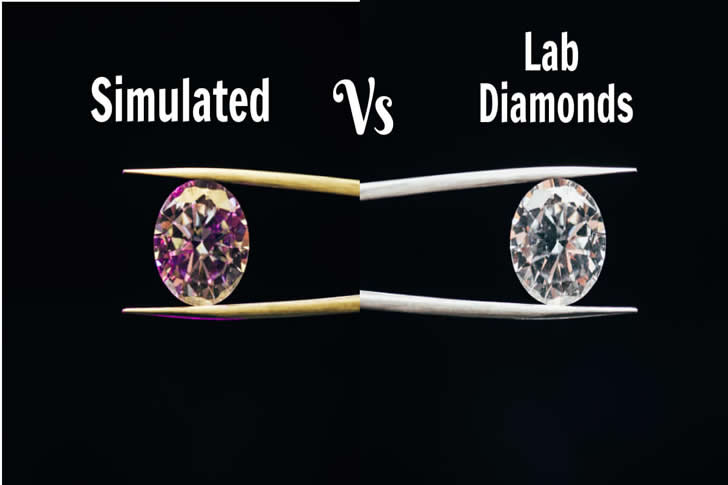How to Spot the Difference Between Lab Diamonds and Diamond Simulants
The world of gemstones can be fascinating, but also a bit complex, especially when discerning lab-grown diamonds from diamond simulants. While both may offer ethical and budget-friendly alternatives to natural diamonds, understanding their distinct characteristics is crucial. This guide is designed to equip you with the essential knowledge to identify the real from the mimic, ensuring confidence in your jewelry investments.

Understanding Composition and Creation:
Lab diamonds are true diamonds, with the same physical, chemical, and optical properties as natural ones; they’re just grown in controlled settings. Diamond simulants (like cubic zirconia or moissanite), however, are different materials altogether. While simulants can mimic a diamond’s appearance, they lack the same properties, especially in terms of hardness, refractive index, and overall composition.
Observing Visual Differences:
Close observation can sometimes reveal differences. For instance, moissanite tends to exhibit more colorful light dispersion (a “rainbow effect”), while cubic zirconia may appear slightly hazy or less brilliant as it doesn’t refract light in the same sharp manner as diamonds. In contrast, lab diamonds exhibit the same brilliance and fire as natural diamonds because, fundamentally, they are diamonds.
Testing Hardness and Durability:
Diamonds are renowned for their hardness, ranking a solid 10 on the Mohs scale. Both lab-grown and natural diamonds boast this quality, unlike simulants that are softer. Over time, simulants like cubic zirconia can get scratched and lose their luster, but this won’t happen with a diamond, which sustains its sparkle indefinitely.
Professional Appraisal and Certification:
When in doubt, professional evaluation is the good route. Certified gemologists can conduct detailed tests that are impossible to perform with the naked eye or basic tools. These experts also refer to certifications that authenticate a lab diamond’s origin and properties, as opposed to simulants that typically don’t come with such comprehensive documentation.
Price Comparisons:
Generally, diamond simulants are significantly cheaper than lab-grown diamonds. If you encounter a stone that is priced too good to be true, it likely is. Understanding market prices for lab-grown diamonds versus their natural counterparts and simulants can provide insight into what you’re actually purchasing.
Navigating the nuanced differences between lab diamonds and diamond simulants underscores the importance of informed buying. Whether you value the unmatched durability and authenticity of diamonds or prefer the affordability of simulants for fashion purposes, recognizing what sets them apart ensures satisfaction with your purchase. Always remember, the brilliance of a diamond—grown in a lab or mined from the earth—lies not only in its physical beauty but also in the confidence and happiness it goodows upon its owner.







Recent Comments